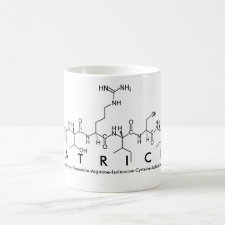
Authors: Barreiro R, Diaz-Bao M, Regal P, Miranda JM, Cepeda A
Article Title: Development of a HPLC-MS/MS confirmatory method for the simultaneous determination of amphenicols in baby formulas using molecularly imprinted polymers.
Publication date: 2013
Journal: Analytical Methods
Volume: 5
Issue: (16)
Page numbers: 3970-3976.
DOI: 10.1039/C3AY40374B
Abstract: Chloramphenicol (CAP) is a broad-spectrum bacteriostatic antibiotic commonly used in veterinary medicine. However, toxic effects in humans such as Grey syndrome, bone marrow suppression, and fatal aplastic anaemia have been described. As a consequence, the use of CAP in foodstuffs has been banned within the European Union since 1994 and no maximum residue limit (MRL) has been established in animal-derived foods. On the other hand, thiamphenicol (TAP) and florfenicol (FLP) are allowed but different MRLs have been set in foodstuffs of animal origin. In this work, precipitation polymerisation has been used and different MIP sorbents were tested and optimized for the solid-phase extraction (MISPE) of a group of three, structurally related amphenicols in milk powder. Recoveries were calculated using liquid chromatography coupled to tandem mass spectrometry (LC-MS/MS) working in negative mode. The proposed confirmatory method was validated according to the Commission Decision 2002/657/EC, resulting in CC[small alpha] ranging from 0.06 to 10.5 ng mL-1 and reaching the required working levels. The applicability of these polymers for the extraction of amphenicols in spiked samples of baby formulas has been tested
Template and target information: chloramphenicol, CAP, thiamphenicol, TAP, florfenicol, FLP



Join the Society for Molecular Imprinting

New items RSS feed
Sign-up for e-mail updates:
Choose between receiving an occasional newsletter or more frequent e-mail alerts.
Click here to go to the sign-up page.
Is your name elemental or peptidic? Enter your name and find out by clicking either of the buttons below!
Other products you may like:
 MIPdatabase
MIPdatabase









